LG V30 vs. Samsung Galaxy Note 8: first-look ultra-widescreen phablet comparison
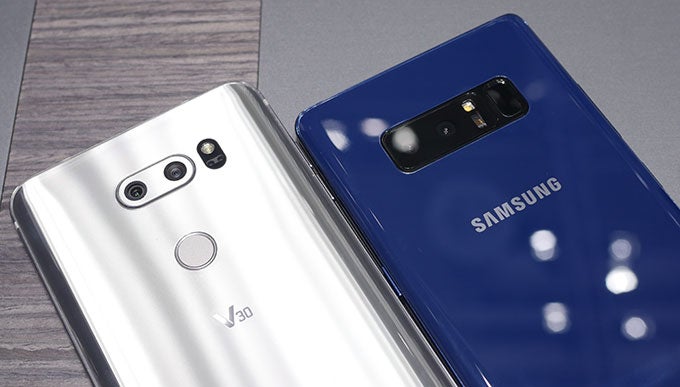
Design

The V30 is the shorter and wider handset, measuring 151.7 x 75.4mm to the Note 8's 162.5 x 74.8mm, and Samsung's phone also comes it a bit thicker, at 8.6mm to LG's 7.3mm. But maybe the most pronounced physical difference comes in terms of weight, with the Note 8 weighing 23 percent more than the V30.
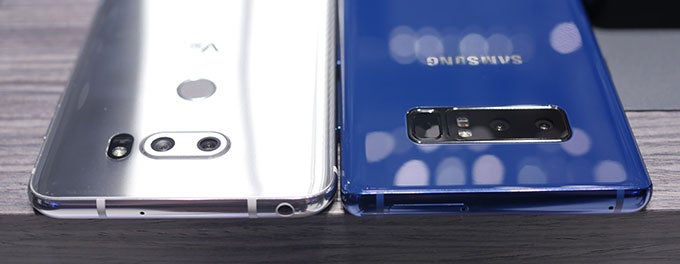
Display
As we mentioned before, the shapes and sizes of these screens are slightly different, but they're still very much in the same class, and each offers a very sharp quad-HD+ resolution. They both have the same rounded corners as their smaller-screened cousins, but the Note 8 takes that curved-edge business in another dimension with its over-the-edge screen. The V30 does have curved front glass, but the screen itself terminates with a bezel before that curve begins.
With past generations of Note and V-series phones, we'd be looking at a tale of AMOLED vs. LCD, but this year LG changes up its display-hardware game and gives the V30 its own AMOLED panel, closing the gap between the two handsets. That's further helped by LG abandoning the secondary screen that had been a staple of past V-family phones.
Both screens look beautiful, and support mobile HDR for exceptionally well-reproduced video. We're going to have to put both models under our display calibration hardware to get the full picture on just what they're capable of, but a casual examination suggests users should be very happy with either.
Interface and Functionality
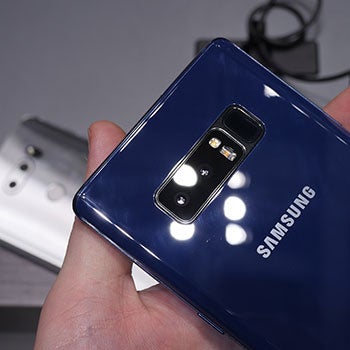
The Note 8 takes that same sort of interaction and runs wild with it; not only do we get a full set of customizable Edge Panels, but there's a little Air Command bubble ready to expand and let us tap into exclusive S-Pen functionality. Obviously, that stylus itself vastly changes the way users can interact with the Note 8 in a way that the V30 can't touch.
Performance
With the last set of Samsung and LG flagships, the G6 was at a disadvantage, thanks to the presence of its previous-gen Snapdragon 821 chip, while the GS8 was rocking the latest 835. This time around, the two phones are much more evenly matched, and while the Note 8 will get an Exynos chip in international markets, the US Note 8 and V30 are landing with the same Snapdragon 835 processor.
They also both land with the same 64GB base storage level, but maybe just because it wouldn't be interesting enough if both these phones were just across-the-board matched in terms of silicon, for the Note 8 Samsung ups the ante on system memory, giving the phone 6GB of RAM to the V30's 4GB. Some further testing is in order to determine the full extent that extra memory has on the user experience, but from our initial observations, these two smartphones very much seem to be performing on similarly high levels.
Camera
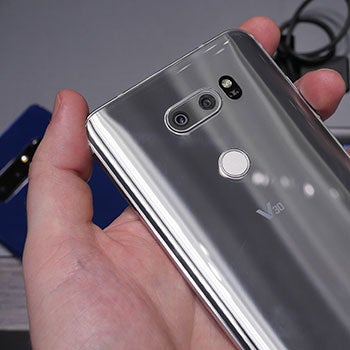
Software also has a big impact on camera functionality, and while Samsung's software offers effortless point-and-shoot (as does LG's), the V30 seems better suited to hardcore users who are looking to get every ounce out of their phone's camera hardware by endlessly tweaking manual settings. The V30 also puts more of an emphasis on video performance, and features like Point Zoom empower owners to shoot some impressively professional-looking clips.
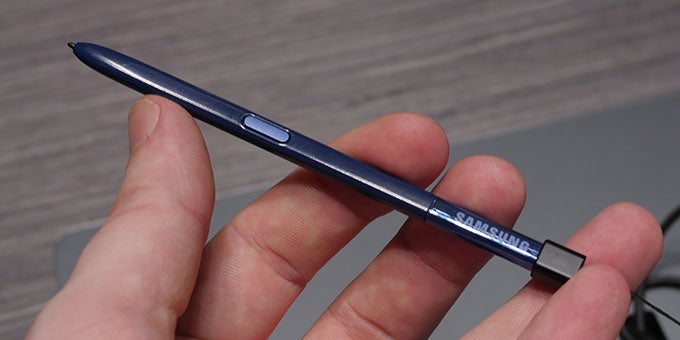
Conclusion
Both these phones feel like significant improvements over their smaller, earlier-year flagship cousins, and we've no doubt that users will get a lot of enjoyment out of either: they're powerfully fast, packed with useful functionality, and offer some stunning designs.
But all that goodness doesn't come for free, and neither one of these phablets is going to be cheap. LG hasn't yet officially confirmed V30 pricing in all markets, but early indications point to it coming in at about 900 EUR in Europe.
That's steep, but it's still got nothing on the Note 8, which will set you back closer to 1000 EUR, or somewhere around $950 in the US. As smartphones go, that's up in the clouds, but if Samsung really manages to convince users that the Note 8 is second-to-none, we wouldn't be surprised if shoppers come out in droves to drop nearly a grand on this handset. If the V30 feels like a better value, does that make it an easier recommendation? Stay tuned for our full reviews on both phones to get the complete picture.

Follow us on Google News











Things that are NOT allowed:
To help keep our community safe and free from spam, we apply temporary limits to newly created accounts: